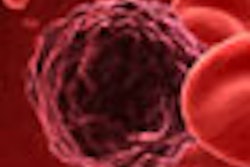Patients with Barrett's esophagus and early or precancerous cells significantly benefit from minimally invasive therapy delivered through an endoscope, according to a new study by researchers from the Perelman School of Medicine at the University of Pennsylvania (Gastrointestinal Endoscopy, February 2013, Vol. 77:2, pp. 190-199).
Until recently, patients with these conditions were treated by surgically removing the whole esophagus, the researchers noted in a university press release. Their study results show that endoscope-based therapies have a high success rate; all of the damaged cells were removed in as many as 95% of cases, greatly reducing the chances of cancer progression. Additionally, in more than two-thirds of cases, patients had no biological signs of the return of disease for years.
Barrett's esophagus, which can be a precursor to esophageal cancer, is a condition in which the cells of the lower esophagus become damaged, typically from persistent exposure to stomach acid. Barrett's esophagus affects more than 3 million people in the U.S., with men developing the condition twice as often as women.
The study evaluated therapies such as radiofrequency ablation and endoscopic resection. In radiofrequency ablation, a balloon or small paddle that transmits energy is attached to the endoscope to burn away a thin layer of the esophageal mucosa, removing the damaged cells. It is a half-hour outpatient procedure performed under mild sedation.
In an endoscopic resection, an endoscope is inserted down the throat to reach the esophagus. Its light and camera enable the doctor to see and navigate, and it has tools for removing affected tissue. Both procedures are far less invasive and less expensive than an esophagectomy in patients with advanced conditions.
Approximately 10% of patients with long-term gastroesophageal reflux disease (GERD) will develop Barrett's esophagus. GERD is a chronic regurgitation of acid from the stomach into the lower esophagus, often resulting in recurring heartburn and, less commonly, difficulty swallowing.
A small percentage of patients with Barrett's esophagus will develop high-grade dysplasia, a more serious condition. The risk of developing esophageal cancer from high-grade dysplasia has been examined in several studies and ranges from 20% to 50%. Overall, patients with Barrett's esophagus have a less than 1% risk of developing esophageal cancer over their lifetimes. However, esophageal cancer has a less than 15% five-year survival rate.
The study results also show that in as many as one-third of the cases, manifestations of the disease returned. "These findings of recurrence make it clear that Barrett's esophagus patients should undergo lifelong periodic endoscopic exams to watch for precancerous esophagus cells. If we find these cells, we can treat them via the endoscope to prevent esophageal cancer," the researchers noted.



















